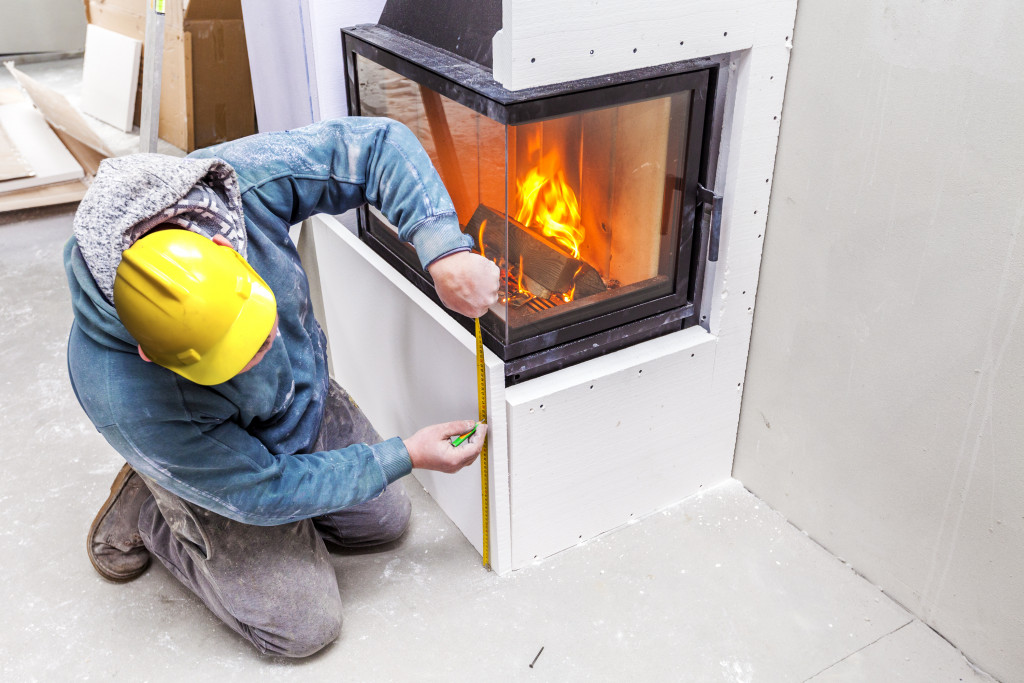The colder weather is on its way, and with it comes a slew of new tasks to prepare your home for the winter. From insulation to weatherproofing, there are many things you can do to make sure your home stays warm and comfortable all season long. Here are some tips to help you get started.
Inspect the roof and gutters for damage and leaks.
The home’s roof and gutters are essential to inspect for damage and leaks before winter arrives. Damaged roofs and gutters can lead to water infiltration and potential damage to the home. Leaks can also cause various other problems, such as mold growth and increased energy bills. It is crucial to be proactive in inspecting these areas of the home to avoid any unnecessary problems.
Clean the windows and screens to allow for maximum light and ventilation.
Window cleaning is an important part of preparing your home for winter. Keeping your windows and screens clean will allow for maximum light and ventilation, which will help keep your home warm and comfortable. Additionally, window cleaning can help improve your home’s energy efficiency, saving you money on your energy bills.
To clean your windows and screens, you should dust them with a soft cloth. You should also use a window cleaner or vinegar and water solution to clean the glass. Rinse the cleaner off completely so that it doesn’t damage the window. Finally, dry the window with a clean towel or newspaper.
Caulk and weatherstrip around doors and windows to keep the cold air out.
Caulking and weatherstripping the doors and windows is one of the most important things you can do to prepare your home for winter. Caulking creates a seal between the door or window and the frame, while weatherstripping helps keep out drafts. Both can help save on energy costs by keeping the heat in your home.
Install storm windows or cover existing windows with plastic sheeting.
Installing storm windows is an essential step in preparing your home for winter. Storm windows can help keep your home warm and cozy by trapping air and heat inside. They can also help prevent drafts and reduce energy costs. If you don’t have storm windows, be sure to cover your existing windows with plastic sheeting to keep the cold out.

Insulate exterior walls, attics, and crawl spaces.
The importance of insulating exterior walls, attics, and crawl spaces cannot be overemphasized. Proper insulation will help keep your home warm in the winter and cool in the summer while also saving you money on your energy bills.
There are a few different ways to insulate your home, but the most common and effective method is to use fiberglass insulation. This material comes in rolls or batts that can be cut to fit any space, and it is relatively easy to install.
Another option is spray foam, which can be sprayed into place and then expanded to fill any gaps. This option is more expensive. Still, it can be a good choice if you have difficult-to-reach areas that need to be insulated.
Whichever type of insulation you choose, follow the manufacturer’s instructions carefully to ensure proper installation. You can also hire a reliable insulation company to complete the work correctly. The company should have the knowledge and experience to ensure your home stays warm when cold weather arrives.
Seal any cracks or gaps in the foundation to prevent drafts.
Sealing cracks or gaps in the foundation is vital to prevent drafts from entering the home. This will help keep the house warm in the winter and cool in the summer. In addition, it will help reduce the amount of energy needed to heat and cool the home, saving money on utility bills.
Keep fireplaces clean and in good working order.
Fireplaces are a mainstay of wintertime comfort but can also be a major source of trouble if not properly maintained. Keeping the fireplace clean and in good working order is essential to enjoy the warmth and ambiance.
You should ensure that the chimney is clear of any debris. This includes leaves, twigs, and nesting material that could block the flow of air and cause a fire. Once the chimney is clear, it’s time to inspect the fireplace itself. Look for cracks in the brick or mortar and make sure that the firebox is clean of any ashes or soot.
It’s also important to have the right tools for starting and maintaining a fire. Make sure you have a good poker, shovel, and brush so that you can tend to the flames as needed. And, of course, always have a sturdy screen in place to catch any errant sparks.
With a little bit of preparation, your home will be ready to keep you warm and comfortable when winter comes.

